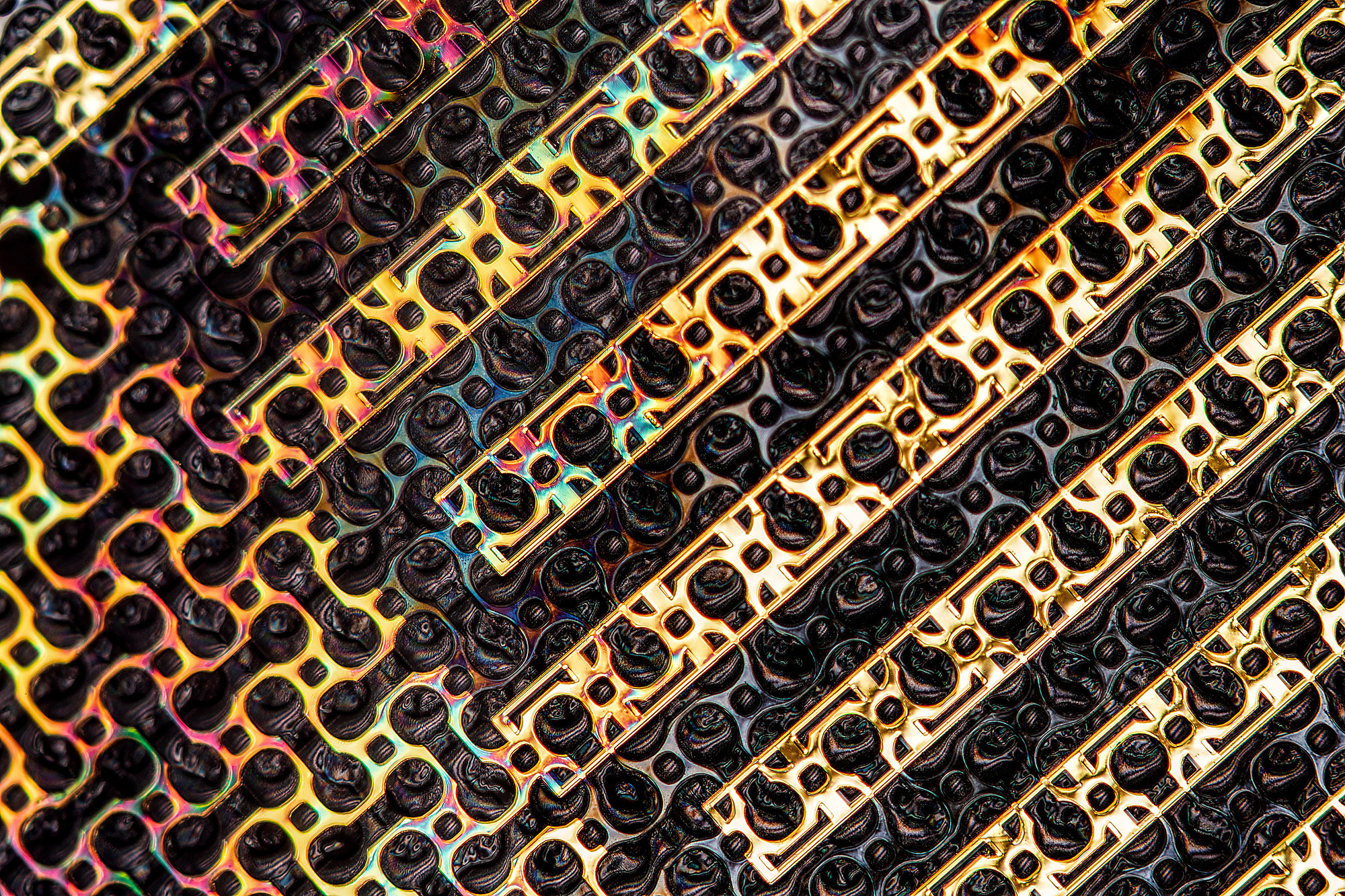
MIT engineers and researchers in South Korea have developed a sweat-proof, sensor-filled “electronic skin”—a conformable, sticky patch that monitors health without malfunctioning or peeling away, even when the wearer is perspiring.
The patch is patterned with artificial sweat ducts, similar to human skin pores. The ducts allow sweat to escape, preventing skin irritation and damage to the sensors embedded in the patch.
The researchers, led by associate professor of mechanical engineering Jeehwan Kim and postdoc Hanwool Yeon, found that a patch with a periodic pattern of circular holes spaced closer together than the width of a human sweat pore let sweat escape. It wasn’t very stretchable, however, and broke easily when applied to skin. Cutting channels between the holes helped. A pattern of repeating dumbbells, when etched into a material (as shown above), produced a stretchable, kirigami-like effect.
In a week-long test, the patch reliably measured a volunteer’s temperature, hydration levels, UV exposure, and pulse, even during sweat-inducing activities like running for 30 minutes and consuming a spicy meal. Such patches could one day track daily vitals or the progression of skin cancer.
Keep Reading
Most Popular
Large language models can do jaw-dropping things. But nobody knows exactly why.
And that's a problem. Figuring it out is one of the biggest scientific puzzles of our time and a crucial step towards controlling more powerful future models.
How scientists traced a mysterious covid case back to six toilets
When wastewater surveillance turns into a hunt for a single infected individual, the ethics get tricky.
The problem with plug-in hybrids? Their drivers.
Plug-in hybrids are often sold as a transition to EVs, but new data from Europe shows we’re still underestimating the emissions they produce.
Stay connected
Get the latest updates from
MIT Technology Review
Discover special offers, top stories, upcoming events, and more.